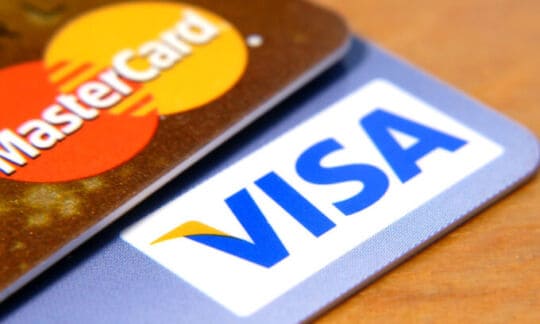
Until recently, blockchain’s potential impact within payments and commerce has been, well, somewhat blocked.
But increasingly, financial service giants are turning their attention to unlocking the potential of blockchain platforms as the technology continues to mature and evolve how value moves across the globe.
“Blockchain technology, and public blockchains in particular, are opening up a number of new use cases one of which is to transfer value — such as remittances — from one country to another,” Raj Dhamodharan, EVP Blockchain and Digital Assets at Mastercard, told PYMNTS.
“But while the underlying infrastructure enables you to transfer value, it doesn’t really lend itself to doing so in a very easy way,” he added, noting that “the consumer experiences are hard.”
Despite the advancements blockchain offers, the technology’s mainstream adoption has been hampered by the technical knowledge required to navigate it. Long blockchain addresses, complex verification processes, and the risk of sending funds to incompatible or fraudulent accounts have all been obstacles, or “blockages,” to a seamless blockchain user experience.
At least until recently.
Simplifying Blockchain for a More Usable Crypto Ecosystem
Creating a trusted, seamless framework for verified blockchain interactions is fundamental to enabling smoother, more secure transactions.
Mastercard’s own Crypto Credential initiative, Dhamodharan said, is a framework designed to help simplify the often complex process of transferring value via public blockchain networks.
The credentialing system allows users to send digital assets, such as stablecoins, across blockchain networks with the same simplicity as sending an email or a text message. By integrating email addresses or mobile numbers into the system, Mastercard removes the cumbersome requirement of using long wallet addresses. Dhamodharan said this simplified identification process is essential for scaling blockchain use cases beyond crypto-native communities and into the mainstream, transforming blockchain’s usability for financial transactions by addressing key hurdles like user experience, compliance and counterparty verification.
“But identifying the counterpart is just the first part,” he said. “Let’s say you have USDC stablecoins that you want to send to the other person. Can the network actually receive it? It’s not something that the consumer should worry about. People should automatically know. The exchanges should know whether that particular order can receive a type of currency. We provide behind the scenes services about what that particular destination can or cannot do.”
On Oct. 15, Mastercard announced that the Stellar Development Foundation would be integrating the Crypto Credential into its Stellar network — a significant integration given Stellar’s focus on remittances across Latin America, Asia and Europe.
The goal, Dhamodharan said, is to make cross-border payments as intuitive as domestic transactions, allowing users to send funds using familiar identifiers while maintaining the security and reliability that users expect from traditional financial institutions.
Building Trust Through Compliance and Security
Beyond simplifying the user experience, Mastercard’s solution addresses a critical component of blockchain interactions: compliance. The company’s framework includes know your customer (KYC) standards and compliance measures that align with global and local regulations. This is essential for ensuring that both exchanges and wallet providers participating in the ecosystem meet the required standards for cross-border payments.
Dhamodharan detailed how the system verifies the KYC level of counterparties before a transaction takes place. By integrating KYC requirements directly into the credentialing process, Mastercard aims to create a scalable solution that works across various regulatory jurisdictions. The framework assesses whether a wallet provider adheres to the necessary compliance levels, whether on the sending or receiving side, which is vital for secure and trusted blockchain interactions.
This approach is akin to Mastercard’s card payment model, where merchants and issuers agree to common standards that ensure security and reliability. The Crypto Credential framework brings similar trust and reliability to blockchain transactions by establishing a common set of rules for all participants.
While remittances are a core use case for the Crypto Credential system, Dhamodharan envisions a broader application for its technology, from issuing cards linked to self-custodial wallets, as seen with the company’s partnership with MetaMask, to enabling programmable bank deposits for B2B use cases. By carrying out multiple levels of KYC, the credential system could unlock a range of services, each tailored to the specific regulatory requirements of different markets.
As Dhamodharan pointed out, the real potential of blockchain can only be realized when users can interact with the network in a trusted, verifiable manner.
